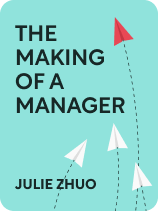

This article is an excerpt from the Shortform book guide to "The Making of a Manager" by Julie Zhuo. Shortform has the world's best summaries and analyses of books you should be reading.
Like this article? Sign up for a free trial here .
What is a hiring plan? Why do you need to have one for your business?
A hiring plan helps you determine what roles you need to fill in your company. Once you’ve done that, you need to begin interviewing candidates.
Read below to learn how to create a hiring plan by interviewing potential job candidates.
The First Step in a Hiring Plan: Identify and Interview Candidates
In The Making of a Manager, Julie Zhuo recommends making a hiring plan: a list of roles you need to fill over the next year based on your company’s goals and vision as well as deficiencies among your current team. A one-year hiring plan will help you clarify the skills and experiences you’ll need future team members to have and when you’ll need to have those positions filled.
(Shortform note: Experts concur with Zhuo that a yearly hiring plan provides a foundation for successful recruitment. In addition to helping you coordinate the timing of hiring needs and identify skills gaps, a plan that anticipates your company’s hiring needs has another major benefit that Zhuo doesn’t mention: When you find and onboard new employees proactively, you prevent lapses in production and employee burnout due to understaffing.)
Once you start your hiring efforts, Zhuo recommends these steps to find and interview candidates:
Step #1: Create a clear job description. Clarify core job duties, and be specific about the skills, experiences, and qualities you need. For example, if you need a project manager who’s detail-oriented and great at calmly navigating difficult conversations with strong personalities, be sure you note that preference.
(Shortform note: As Zhuo notes, a clear job description is key to attracting qualified candidates. One important part of a good job description that Zhuo doesn’t mention is a clear job title that matches your job requirements. Candidates look for job titles that fit their qualifications, so be sure you choose job titles that are easy to understand. For example, “receptionist” is a better choice than “director of first impressions.” Also, avoid superfluous language that’s overly complicated so candidates can easily understand what’s expected. For example, instead of “interfacing cross-functionally and troubleshooting interdepartmentally,” simply say “collaborating with team members from different departments.”)
Step #2: Decide where you’ll look for candidates. Zhuo recommends asking colleagues for recommendations before looking anywhere else. If none of their suggestions work out, you now have an idea of what kind of person to look for elsewhere.
(Shortform note: While Zhuo asserts that recommendations from peers should be your go-to hiring strategy, others claim that seeking hires via a recruitment agency is the best approach in certain circumstances. For example, agencies are especially useful for finding candidates to fill leadership or highly technical positions. They often have staff members with expertise in particular industries, which enables them to spot employees with specific skills that you might overlook. Using a recruitment agency can also free you to focus your efforts elsewhere, thereby saving you—and your company—time and resources.)
Step #3: Prepare a template of interview questions. Be clear about what you want to learn, and use the same questions for each candidate interviewing for a single role. As Zhuo says, this helps you compare candidates based on the quality of their answers rather than subjective impressions.
(Shortform note: To prepare for interviews more efficiently, consider conducting software-assisted interviews. Software tools generate interview questions for you based on your specific job requirements and help you evaluate candidates. These tools can also decrease bias in your hiring decisions by scoring candidates in a way that’s potentially more objective than in-person judgments.)
Step #4: Invite colleagues to help you conduct interviews. According to Zhuo, this can diminish bias that often interferes when only one person is involved and can help you catch warning signs you might overlook if you’re on your own—for example, a candidate who won’t make eye contact with female interviewers.
(Shortform note: What’s the ideal number of interviewers to include? Zhuo doesn’t say, but others recommend a maximum of three people. More than three may intimidate and confuse candidates, making them feel like they must remember many names and the role each person has in the organization. Also, including more interviewers than necessary tends to make decisions about candidates more challenging, as it’s rare for multiple people to be perfectly aligned in their opinions of candidates’ strengths, weaknesses, and fit with the company culture.)
Step #5: Conduct memorable interviews. Avoid distractions and devote your attention to candidates so they know you consider them a priority. Also (if you think they’re likely to be a good hire), describe the difference you see they’ll make when they’re on your team, and tell them how excited you are to welcome them to the company. As Zhuo says, you need to make sure candidates see your company as an attractive place to work.
(Shortform note: One way to entice candidates during interviews that Zhuo doesn’t mention is to build transparent career trajectories—let potential hires know what advancement opportunities and financial incentives they can expect if they perform well. This can help overcome candidates’ fear of entering an unfamiliar work environment and may give your company an edge if candidates end up entertaining multiple offers.)

———End of Preview———
Like what you just read? Read the rest of the world's best book summary and analysis of Julie Zhuo's "The Making of a Manager" at Shortform .
Here's what you'll find in our full The Making of a Manager summary :
- How to build a team and motivate them to work together
- How to run productive meetings
- Tips on how to interview and hire the right employees






